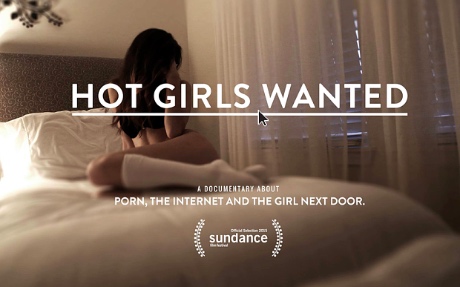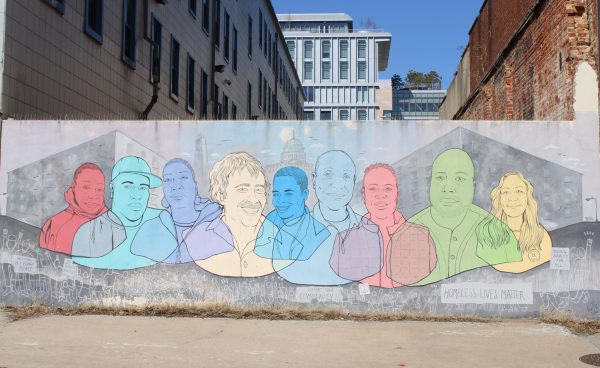Review || Film: “Hot Girls Wanted,” the Corrupting Nature of the Amateur Porn Industry

The 2015 Sundance documentary, “Hot Girls Wanted,” delves into one of society’s greatest obsessions: the porn industry. Produced by actress Rashida Jones and released on Netflix in May, the film takes a harrowing look at the amateur porn industry by profiling the lives of five women in the Miami porn scene.
The women, between ages 18-25, came from different backgrounds, but the Internet and social media socialized these aspiring porn stars to sexualize themselves and others. This socialization enticed the women into the porn industry to achieve money and fame through the help of websites like Craig’s List. On the websites, agents draw in young women through free trips across the country and the ability to make quick money.
According to the documentary, women are allured with the promise of quick money: $800 for each scene, with three to five scenes a week for new recruits. Many amateur porn websites featuring newcomers require subscription fees, with the top three worth about $50 million dollars.
All of the women believe that they can make it in the porn industry with their tenacity, independence, and their rising Twitter followers. To these young women, it’s all about getting their name out there, and that means gaining success on Twitter because it is one of the only social media sites that does not censor images.
However, “Hot Girls Wanted” quickly crumbles the illusion of the glamorous porn industry where money always equals freedoms and the participants’ choices are their own. Incomers may only last for months to a year if they don’t make it into the major industry. To make a name for themselves and to continue to receive the constant flow of cash, aspiring porn stars must be willing to do anything and everything.
This is where the line between choice and coercion blurs. There is no explicit discussion of the abuse porn stars receive both on and off screen, so the audience must settle with constructing the problematic nature of porn through watching segments of their porn scenes, some verging on a line of sexual assault.
The audience watches as one of the protagonists, a Latina girl named Jade AKA Ava Kelly, performs a scene where a male porn star forces her to give him a blow job, throw up, and then lick up her vomit.
These types of scenes are common when directed by porn companies like Facial Abuse, where according to Duke University student and porn star Miriam Weeks AKA Belle Knox, “They try to figure out what makes you tick and fuck with you.”
Even though abuse is rampant in the porn scene, the documentary only provides a brief discussion of the abuse workers can face at the end of the film. According to the film, research shows that 40 percent of online pornography depicts violence against women.
If the audience really wants to understand the entirety of the porn industry’s acceptance of violence, they will have to perform their own research. They will have to look to other sources to uncover that, “88 percent of scenes in porn films contain acts of physical aggression, and 49 percent of scenes contain verbal aggression.”
Similarly, there is no mention in the film of how porn upholds rape culture in society. The documentary robs the audience of the knowledge that porn is a multi-billion dollar industry with the norm of hurting women and normalizing rape in the process.
This problem only becomes obvious to the audience when watching one protagonist’s rape scene in a porno. The scene frames an older man raping the protagonist as hot and inconsequential. The aspiring porn star visibly shows her discomfort with the storyline, saying, “That last part, I fucking hated.” However, she continues to perform similar scenes because of the money.
The audience also gets a glimpse of the abuse that the camera doesn’t record. One protagonist fears for her life when she doesn’t feel like she could say no to a porn director. The director demands that she give him a forced blowjob, instead of the agreed-upon regular blowjob where she would not be in danger of vomiting or harming her body.
After the aspiring star performed the scene as instructed, she related, “Then I understand that’s how like rape victims feel. Like, they feel bad about themselves. Did I really want money that bad?”
The film explains that the dearth of regulations in the porn industry contributes to the exploitation of women. The only federal regulation authorizes that workers in porn must be at least 18. Workers do not have to wear condoms in 49 states. California, previously the number one state for filming porn, is the sole state to require the use of condoms in pornography, a law the state just passed in 2014. Then the industry began filming more in Florida to dodge this regulation.
Due to the absence of regulations and protections from violence, the film argues, these young women really do not have much choice over their decisions.
As Rashida Jones explains in an interview with journalist Janet Mock, “Originally you feel like it’s a choice for freedom, but these girls start to realize that they’re not making choices, that choices are being made for them in certain regard. By the time they realize it, it could be too late.”
By taking this view, Jones and the filmmakers perpetuate that porn is a disgraceful choice and that we should feel sympathy for the young women who are “tricked” into the industry. A melancholy melody plays at the end of the film, as high school yearbook pictures parade the protagonists as successful and innocent before they went into the industry, compared to their haunting and dishonorable lives in porn.
The documentary makes the audience feel dirty, disgusted, and sympathy for all of the appalling things the aspiring porn stars had to do. However, the film condemns newcomers to porn as clueless, insecure, and later on, degenerate, instead of focusing more attention on the agents and industry that generate 13 billion dollars in the United States a year, exploiting women.
By depicting the aspiring porn stars as being corrupted by the industry, “Hot Girls Wanted” reinforces the stigma surrounding sex work. Sex work of any kind is real work that may be ideal for people who need to earn quick money temporarily while they are preparing for another job, and is a valid profession in itself. In order for sex work and the porn industry to ensure safety and regulations, engaging in these professions must be viewed as legitimate choices.
It’s not performing sex to make money that is problematic, it’s rather the industry that upholds misogyny, rape culture, and racism, to name a few. If the porn industry did not represent women as “processed meat,” existing solely to please men, normalize assault, and create niche genres like “spicy Latina” that rely on racist stereotypes, porn could actually be empowering and invigorating for women.
However, “Hot Girls Wanted” neglects to overtly address these issues. The film does not even question the popularity of the amateur porn industry, and what that says about our society: young girls are viewed as pure virgins who can be more easily dominated and manipulated than adults. The perpetuation of these beliefs is another way porn upholds rape culture.
For all of “Hot Girls Wanted’s” shortcomings, the documentary’s downfall was in not providing any solutions. How can we change the porn industry and increase the transparency of what aspiring porn stars will face, if the audience doesn’t know how to make that change in the first place?
There needs to be more women directors and writers in porn and a nationwide effort to mandate condoms and enforce frequent STI testing. Women need to be given respect and treated as human beings, such as in feminist porn, in which men and women are equal, and consent to all of the acts both on and off the screen.
When Jones agreed to produce “Hot Girls Wanted,” she was “calling for a slight pause and a conversation about if we as a culture feel like this is where we want to be headed.” Unfortunately, this documentary did not provide all of the resources to truly examine the problematic ideals of our culture that are reflected and shaped by the porn industry. Before we do anything else, we must condemn the industry instead of those just trying to make a living.

Senior studying journalism and women, gender, and sexuality studies. Went kayaking with seals in Vancouver this summer and traveled to 12 countries while...











